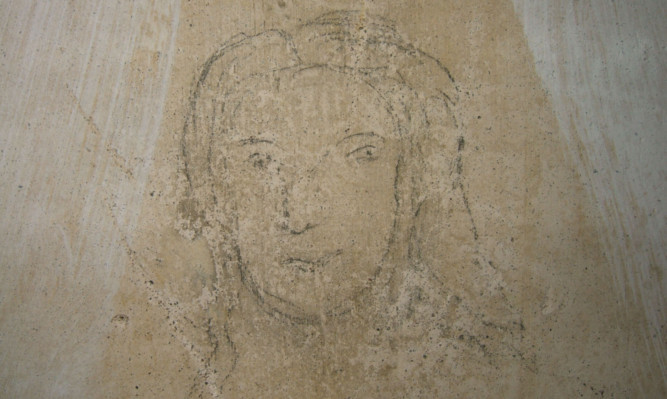A pencil sketch of a mystery woman has been uncovered during renovation work at a former Perthshire manse.
Glebe House was formerly used as accommodation for the minister of St Serf’s Church in Dunning but was turned into a bed and breakfast in 2014.
During a recent revamp owners Sara and David Wood discovered the drawing on plaster above a fireplace.
It is believed the sketch has been hidden from view since the manse was built 150 years ago.
Mrs Wood said: “It really is a mystery as to who this lady could be.
“Our research into the property shows us that the plastering in the house was originally carried out by a local Dunning tradesperson in the 1860s, a Mr Eadie, but as to the identity of this young lady and why she has been encased in plaster for well over a hundred years, this is entirely unknown.”
She added the drawing will now be covered up again but care has been taken to ensure it has been preserved.
“As part of our renovation plans we’ve chosen to carefully cover up our young lady but she’ll be there for years to come, silently waiting for future owners to discover her.”
Glebe House has been in private hands since 1973 and the Woods are the third owners since that date. The property was built over in nine months in 1860, having been commissioned by Lord Rollo as a new manse for St Serf’s Church.
During the Second World War it housed evacuees from Glasgow. The house was sold by the Church of Scotland in 1967 and much of its land given up for development of the Glebe and Manse Place.
Do you know the origins of the wall art? Call 01738 575871 with any information.
